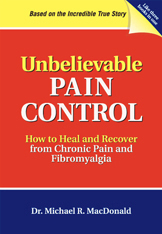
MORE WAYS TO MEASURE PAIN
Pain is what you say it is. This is a simple rule used by all pain specialists. This is not the only information used, but it is where all health professionals start.
Health professionals are scientists, as well as clinicians.
So, as scientists, they want to have as much detailed information as possible. To do this, scientists like to measure things in several ways and see if all of their measures add up.
This approach is especially useful when assessing pain. There is no way to see pain and, currently, no one test to show it’s presence. To overcome this limitation, several indirect measures can used.
Here is a short list of indirect ways of measuring pain:
- Questionnaires. There are many pain questionnaires that have been developed and validated. The beauty of pain questionnaires is that they allow one to compare a person’s responses on the questionnaire with the responses of other people with similar types of injuries and pain. Many details about a person’s pain can be collected by questionnaires. These details help with diagnosis and treatment. All of this adds credibility.
- Limitations. Details about how your pain symptoms limit your activities help explain the pain you experience. For example, one would expect you to have trouble bending or doing your gardening, if you have back pain.
- Loss of work. This can be easily verified. The loss of work is often present in cases of more severe pain. Sometimes, even lower levels of pain can lead to loss of work, if your work is very physically demanding.
- Prescription pain medications. If you are taking medications for pain, prescribed by your doctor, this is one indication that your doctor believes you are in pain. Medications for sleep and depression can also indicate that your pain has been interfering with you life.
- Losses. No one suffers losses if they can help it. If you are out of work and losing money every day, there must be a good reason for this, and a reason beyond your control. If your losses have been building, month by month, there must be a very strong reason, such as disabling pain.
These indirect measures are all important. But, the most important part is how all of these, and other indirect measures, add up. Are they all consistent and point in the same direction? Do they all tell the same story?
This is what scientists call convergent evidence. Do the results from each measure all converge? Do the results all narrow down to one best explanation. When the results all point to the same answer, the evidence is strong and convincing.
If your doctor, family member, lawyer, insurance adjuster, or anyone, doubts the reality of your injuries and pain, give them a short list of the evidence . And then, tell them that all of the evidence adds up, points in the same direction, and supports what you are trying to tell them.
Juries and judges also like this approach. It makes their jobs easier.
* * *
Thank you for reading. Thank you to Patricia Serna (photo above) and Rachel Walker (image below), both from Unsplash, for your creative work. And, please feel free to steal, share or join our growing list of subscribers.
Mike




